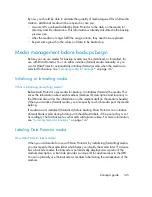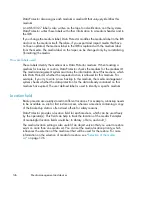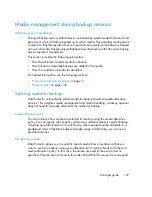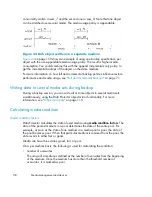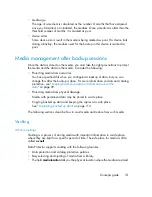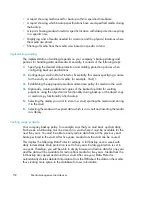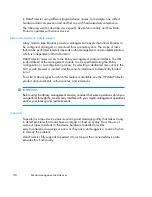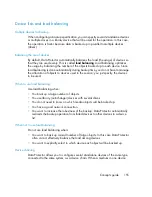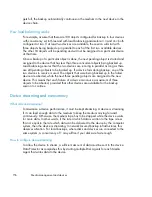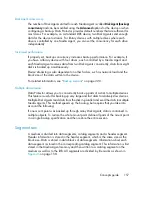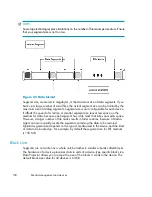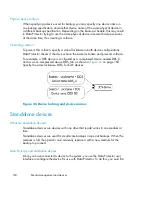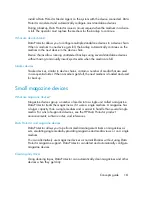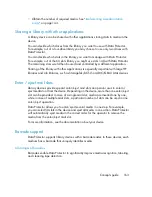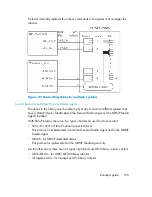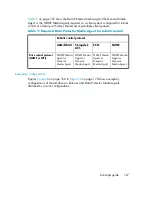
•
A report showing media used for backup within a specified time-frame.
•
A report showing which backup specifications have used specified media during
the backup.
•
A report showing media stored at a specific location with data protection expiring
in a specific time.
•
Displaying a list of media needed for a restore and the physical locations where
the media are stored.
•
Filtering of media from the media view based on specific criteria.
Implementing vaulting
The implementation of vaulting depends on your company’s backup strategy and
policies for handling data and media. Generally, it consists of the following steps:
1.
Specifying the desired data protection and catalog protection policies when
configuring backup specifications.
2.
Configuring a vault in Data Protector. Essentially, this means specifying a name
for the vault you will use for media, for example: Vault_1.
3.
Establishing the appropriate media maintenance policy for media in the vault.
4.
Optionally, creating additional copies of the backed up data for vaulting
purposes, using the object mirror functionality during backup, or the object copy
or media copy functionality after backup.
5.
Selecting the media you want to store in a vault, ejecting the media and storing
it in the vault.
6.
Selecting the media with expired data which is in a vault and inserting the media
in a library.
Vaulting usage example
Your company backup policy, for example, says that you must back up data daily.
Each week a full backup must be stored in a vault where it must be available for the
next five years. You must be able to easily restore data from all the previous year’s
backups stored in the vault. After five years, media from the vault can be re-used.
This implies the following Data Protector settings: a full backup once a week with
daily incrementals. Data protection is set to five years. Catalog protection is set to
one year. Therefore, you will be able to simply browse and restore data for one year
and the data will be available for restore from media for five years. Media from the
full backup are copied and stored to a vault. After one year, Data Protector
automatically deletes detailed information from the IDB about the data on the media,
thus creating more space in the database for new information.
Media management and devices
152
Summary of Contents for B6960-96035
Page 17: ...Overview of backup and automated media copy sessions 340 105 Concepts guide 17 ...
Page 20: ...20 ...
Page 22: ...Publication history 22 ...
Page 132: ...Planning your backup strategy 132 ...
Page 182: ...Media management and devices 182 ...
Page 186: ...Users and user groups 186 ...
Page 204: ...The Data Protector internal database 204 ...
Page 218: ...Figure 62 Direct SIP integration example Service management 218 ...
Page 242: ...Integration with database applications 242 ...
Page 264: ...Synthetic backup 264 ...
Page 274: ...Split mirror concepts 274 ...
Page 288: ...Snapshot concepts 288 ...
Page 344: ...Further information 344 ...
Page 402: ...Glossary 402 ...








